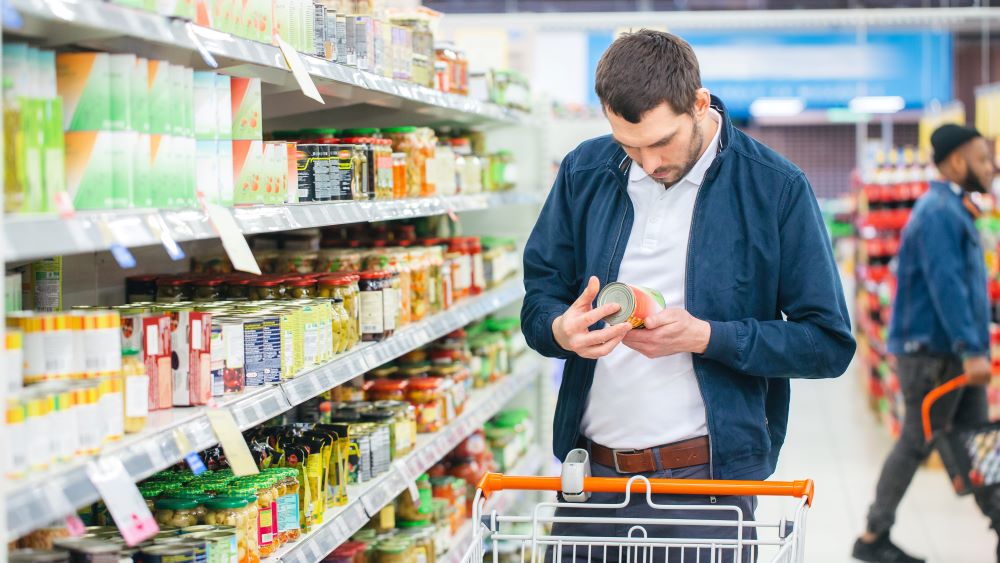
Last month, the Institute of Export & International Trade (IOE&IT) responded to a consultation from the UK government on reform of food labelling regulations. Live consultations continue to take responses despite the pre-election period currently in place.
Drawing on the perspectives of members, IOE&IT expert Ilona Kawka spoke to the Daily Update to explain what the consultation means and how it could affect traders in the food sector.
Origin agenda
Country of origin and the source of ingredients are among the main concerns of the consultation, which is considering the costs and benefits to business of disclosing it clearly on the packaging presented to consumers.
“There is a perception that some foods are labelled in a way that is not fully transparent about the origins of the food,” the consultation from Defra states. It’s important to consider that country of origin can change if a product has been through significant processing, as with live animals processed for meat products. Some feel that, though the origin of ingredients may be labelled on packaging, it is not sufficiently prominent or clear.
Kawka explains:
“Let’s say we are importing live animals from anywhere outside the UK, and we process them in the UK, the ‘substantial transformation’ – changing the heading of the Harmonised System (HS) code of the final goods – means that, in some cases, we could change the country of origin to British.”
Bacon made from pigs imported from abroad but processed in the UK are therefore considered British, and the manufacturer is not obliged to disclose that the original meat used came from overseas.
“This is one of the things addressed in the consultation,” Kawka says:
“I believe it’s important for consumers, so that there would be a clear mention of where the ingredients for the final product are sourced. The consultation is asking where and how a country of origin label could be made more transparent.”
Consumers and costs
Among the views presented to government are those of consumers. Kawka says that “people do make choices about products based on where they are sourced from”, and that they consider it important that the origin of goods is clearly and universally marked on packaging.
With that in mind, IOE&IT expressed the need for clarity on origin for consumers – “but also that it has to be done in a way that considers the additional costs that could apply in supply chains”.
“Right now, you might have a supply chain that sources, say, sausages. Pigs might be taken from different countries, and your final product is British sausages.
“But [new requirements] might mean you have to increase traceability throughout your supply chain to able to list the source of ingredients country on the packaging for each batch of the product.”
Boosting traceability could mean initial increased costs for the entire supply chain, Kawka notes. A government impact analysis found that the increased costs could amount to a £2m one-off price tag for UK businesses over a ten-year time period, as well as £8.9m in familiarisation and £3.4m in monitoring and compliance costs.
The changes that could be implemented as a result of the consultation would mainly affect those in the meat, seafood and dairy product sectors. Businesses in those industries could have to “start monitoring the supply chain and implement measures they have not in the past”.
Visibility
Kawka re-emphasises the benefits to manufacturers of reassuring consumers concerned about animal welfare, noting that labelling around free-range eggs was received well in the past.
Customers have expressed a desire, she says, to know more about the welfare of animals in the supply chains of food products. Ratings describing the quality of treatment of animals in supply chains will attempt to give an overall picture of animal welfare under proposals in the consultation.
Kawka suggests this “will encourage manufacturers to improve the welfare of [animals] if they want to have a high welfare ranking for their product – or to source ingredients from farms with better welfare levels for composite products to achieve high ranking for the final product”.
There will still be a traceability cost “starting from the farm” through to supermarket shelves, which will increase prices in a way that is “ultimately going to end up with the customer”.
Mitigating these costs could be possible through increasing digitalisation across the supply chain Kawka argues – something recently highlighted in a separate government initiative.
“Getting as much digitalisation as possible into these supply chains – whether on e-passports or other aspects of the process,” she says.



